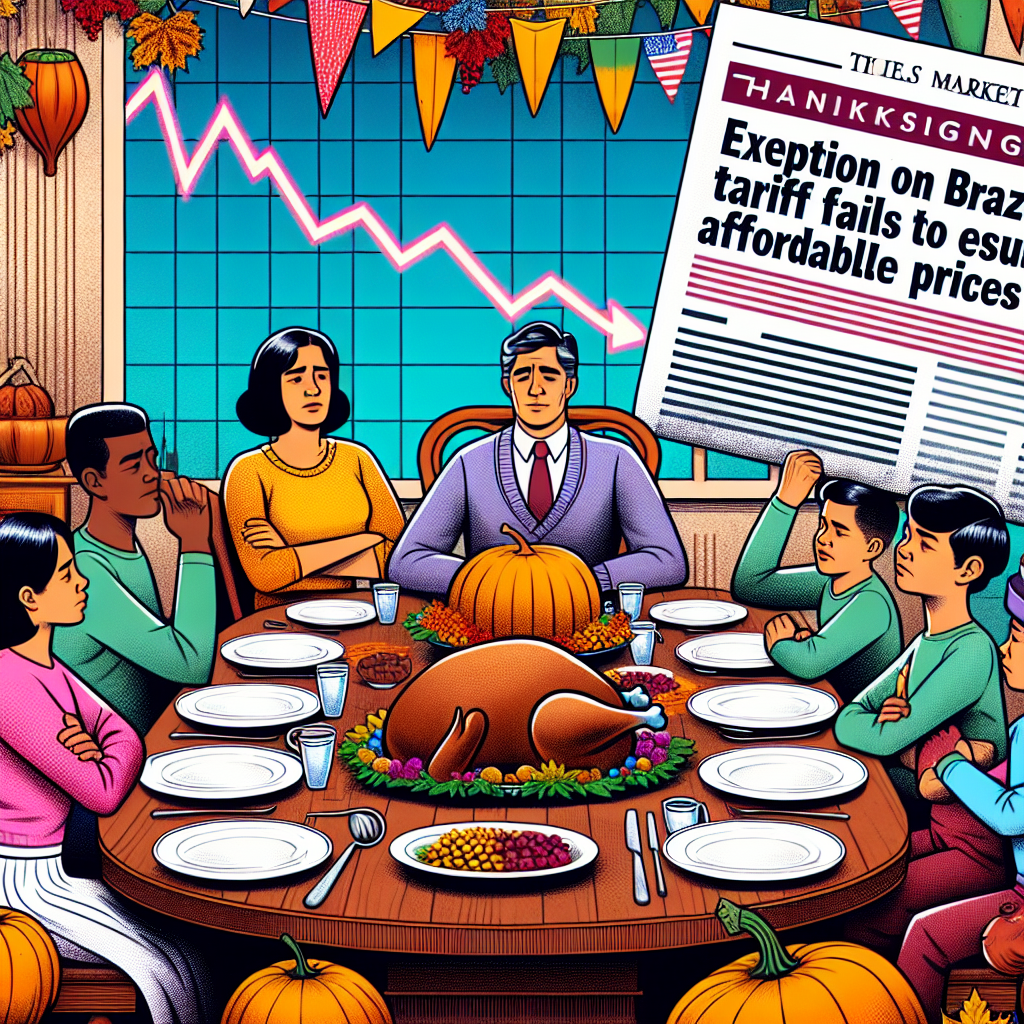Before Thanksgiving, despite President Trump’s exemption of the 40% tariff on Brazilian beef, causing selling pressure and a downturn in the U.S. beef futures market, retail prices of beef still remain high, making it unaffordable for many ordinary families.
To alleviate the economic pressure brought by high beef prices to the public, on Thursday the 20th, President Trump fulfilled his promise to lower beef prices by reducing the scope of tariffs on Brazilian agricultural products. With Brazilian imported beef holding a significant market share in the U.S., news about the tariff reduction led to a selling frenzy in the futures market.
On Friday the 21st, the U.S. cattle futures market opened lower and hit new lows. The February live cattle futures at the Chicago Mercantile Exchange dropped by 1.85 cents to 215.400 cents per pound, while the January feeder cattle futures fell to 316.375 cents per pound, down by 5.075 cents.
Market analyst Scott Varilek, who frequently comments on the cattle market, told the agricultural website AGWEB that one reason for the recent cattle market sell-off is that the market had already anticipated a reduction in Brazilian beef tariffs, with many factors already reflected in the current market prices.
In the cash market, on Wednesday the 19th, post-slaughter beef prices in the northern U.S. were $345 per hundred pounds, down by $5-6 from the previous week, while live cattle prices were $218 per hundred pounds, a $7 drop. In the southern regions, live cattle prices ranged from $222 to $224 per hundred pounds, showing a $3-4 decline from the previous week.
Varilek believes that cattle breeders had expected cattle prices to continue to rise, but now find themselves trapped, leading to efforts to reduce their herds. Some large cattle breeders have begun to discount the sale of mature cattle.
The trends in live cattle futures and post-slaughter beef cash markets have yet to extend to the wholesale beef market.
According to a report released by the U.S. Department of Agriculture (USDA) on Friday the 21st, wholesale boxed beef prices rose: Choice Cutout prices increased by 20 cents from the previous day to $371.48 per hundred pounds, while Select Cutout prices rose by $2.80 to $356.98 per hundred pounds.
The report indicated that for the past week, the number of cattle slaughtered under USDA inspection was 585,000, an increase of 9,000 from the previous week but a decrease of 50,308 compared to the same period last year.
Another USDA report released on Friday – The Cattle on Feed Report – showed that as of October, there were 2.039 million fattened cattle in the U.S., a 10.02% decrease from the previous year; net placements were at 1.99 million, the lowest since 1996; and marketings were at 1.697 million, down by 8.02%. As of early November, large feedyards had a cattle inventory of 11.7 million, a 2.17% decrease from the previous year.
Due to insufficient processing capacity, the large beef processing plant Tyson announced on the 21st the closure of its beef processing plant in Lexington, Nebraska, which employed 3,200 workers and slaughtered 1.25 million cattle annually. Tyson cited severe losses in its beef division, with costs increasing by $1.575 billion compared to a year ago.
Industry insiders believe that the key factor determining U.S. beef prices is the prolonged drought in major cattle-producing areas, leading to pastures continuously drying up, prompting ranchers to reduce their herds.
John Nalivka from Sterling Marketing told AGWEB that production capacity is crucial for any business’s success, as economies of scale incentivize companies to lower unit costs. However, due to the large-scale herd liquidation, the cattle inventory has dropped to the lowest level since 1951. In such a scenario, as he has repeatedly mentioned this year, processing plants will reduce their capacities.
The U.S. is the second-largest export market for Brazilian beef. In April of this year, the U.S. imported 47,800 tons of beef from Brazil, which dropped to 27,400 tons in May due to the 10% tariff increase and further to 18,200 tons in June. On July 30th, the White House announced a 40% tariff on Brazilian beef and other goods in response to threats posed by the Brazilian government to the U.S.
With the latest decree canceling most tariffs, it is estimated that a large influx of Brazilian beef is set to enter the U.S. market.

